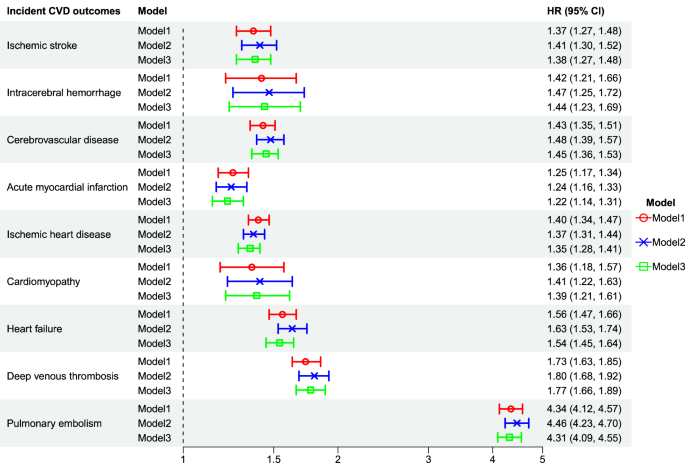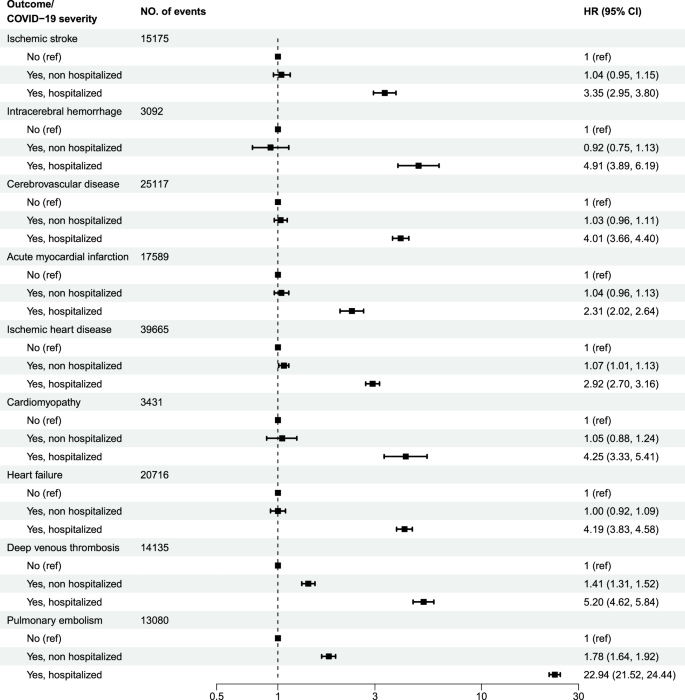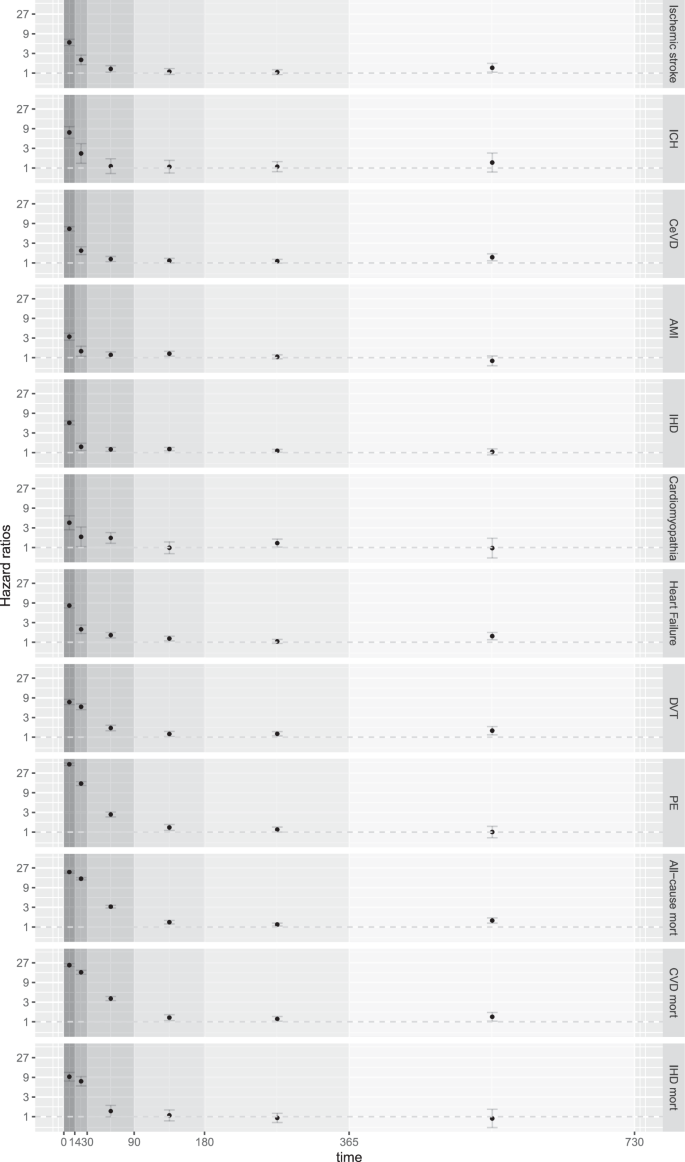Chandelier
Senior Member (Voting Rights)
Covid-19 and cardiovascular disease in a total population-study of long-term effects, social factors and Covid-19-vaccination
This study examined the risk of cardiovascular disease following Covid-19, considering risk periods and prognostic factors i.e., social factors, Covid-19-vaccination and comorbidities.
The study cohort included the Swedish population aged 40-75 years (n = 4,095,414). Covid-19 was associated with elevated hazard ratios for all outcomes; ranging from 1.22 (95% confidence interval:1.14-1.31) for acute myocardial infarction to 4.31 (95% confidence interval:4.09-4.55) for pulmonary embolism.
The increased risk was most evident among hospitalised individuals, however, also individuals with mild Covid-19 had an elevated risk.
Finally, our findings demonstrated increased long-term cardiovascular risk and generally stronger effects of Covid-19 in more vulnerable social groups.
In this work, we demonstrate an increased risk of cardiovascular disease after Covid-19, also among mild cases, findings relevant from both a public health and healthcare perspective.
Web | DOI | PDF | Nature Communications
Spetz, Malin; Natt och Dag, Yvonne; Li, Huiqi; Nyberg, Fredrik; Rosvall, Maria
Abstract
Understanding more about the risk of cardiovascular disease in the large population-group with mild Covid-19 is essential since the preventive need might be extensive.This study examined the risk of cardiovascular disease following Covid-19, considering risk periods and prognostic factors i.e., social factors, Covid-19-vaccination and comorbidities.
The study cohort included the Swedish population aged 40-75 years (n = 4,095,414). Covid-19 was associated with elevated hazard ratios for all outcomes; ranging from 1.22 (95% confidence interval:1.14-1.31) for acute myocardial infarction to 4.31 (95% confidence interval:4.09-4.55) for pulmonary embolism.
The increased risk was most evident among hospitalised individuals, however, also individuals with mild Covid-19 had an elevated risk.
Finally, our findings demonstrated increased long-term cardiovascular risk and generally stronger effects of Covid-19 in more vulnerable social groups.
In this work, we demonstrate an increased risk of cardiovascular disease after Covid-19, also among mild cases, findings relevant from both a public health and healthcare perspective.
Web | DOI | PDF | Nature Communications



